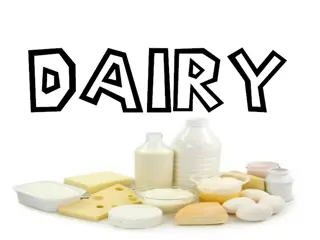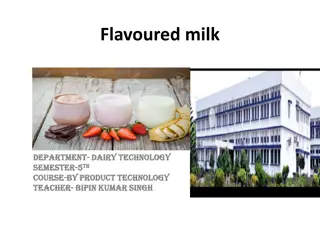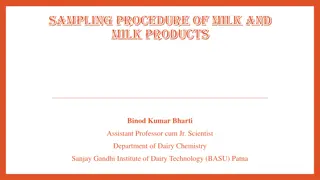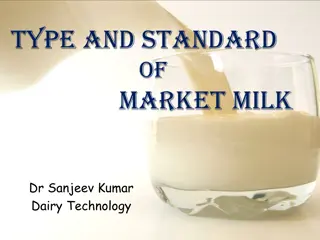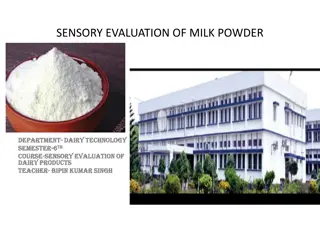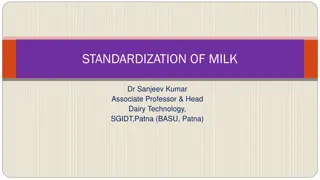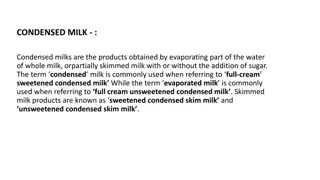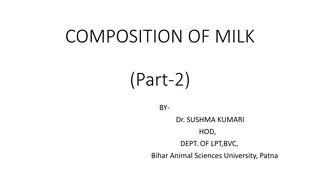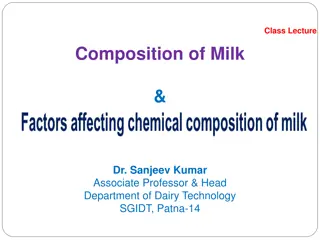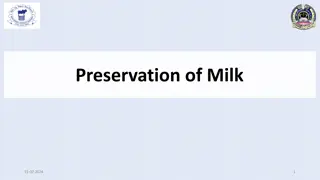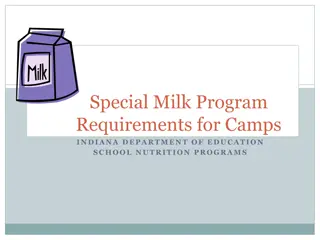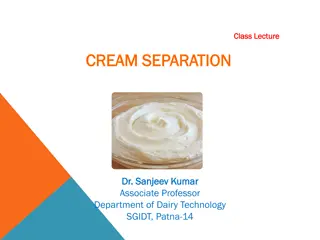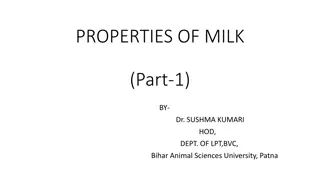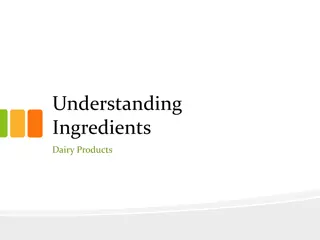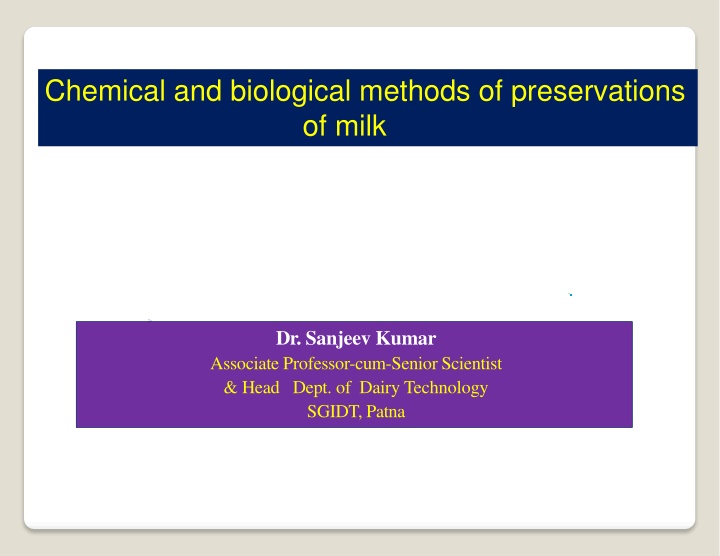
Methods of Milk Preservation: Chemical vs Biological Approaches
Explore the chemical and biological methods of milk preservation by Dr. Sanjeev Kumar, covering the use of hydrogen peroxide (H2O2) as a preservative. Learn about the antimicrobial action of H2O2 and its effectiveness against various bacteria, along with the requirements of a chemical preservative for milk. Discover how these methods help in prolonging the freshness and safety of milk, especially in areas where refrigeration is not feasible.
Download Presentation

Please find below an Image/Link to download the presentation.
The content on the website is provided AS IS for your information and personal use only. It may not be sold, licensed, or shared on other websites without obtaining consent from the author. If you encounter any issues during the download, it is possible that the publisher has removed the file from their server.
You are allowed to download the files provided on this website for personal or commercial use, subject to the condition that they are used lawfully. All files are the property of their respective owners.
The content on the website is provided AS IS for your information and personal use only. It may not be sold, licensed, or shared on other websites without obtaining consent from the author.
E N D
Presentation Transcript
Chemical and biological methods of preservations of milk Dr. Sanjeev Kumar Associate Professor-cum-Senior Scientist & Head Dept. of Dairy Technology SGIDT, Patna
INTRODUCTION Milk is an easily perishable raw material. Contaminating bacteria may multiply rapidly and render it unsuitable for processing and/or unfit for human consumption. Bacterial growth can be retarded by refrigeration and/or heat treatment thereby slowing down the rate of deterioration. Under certain conditions refrigeration may not be feasible due economical and/or technical reasons. to In India milk is produced in small quantities (2-4) liters by approx. 70 million farmers spread around 5 lakh villages Difficulties in applying refrigeration are specially a problem for certain areas in the country for setting up or expanding milk production. In these situations, it would be beneficial to have access to a method, other than refrigeration, for retarding bacterial growth in raw milk during collection and transportation to the dairy processing plant.
PRESERVATION OF MILK WITH H2O2 Initially some chemicals e.g., Mercuric chloride, Formalin, Potassium dichromate were tried In 1967 the FAO/WHO Expert Panel on Milk Quality concluded that the use of hydrogen peroxide might be an acceptable alternative in the early stages of development of an organizeddairy industry H2O2is a strong oxidizing, bleaching and germicidal agent Concentration of H2O2 ranging between 0.02-0.50% resulted in preservation of milk for a very short period Addition of H2O2 @ 1% (w/v) preserved freshness of raw milk upto 12- 24 hours at room temperature Storage of milk at 5 C extended upto 100days
Preservative action ofH2O2 Antimicrobial action of H2O2is not due to it s oxidative propertiesas a molecule Production of other powerful oxidants e.g., singlet oxygen, superoxide radicals, and hydroxyl (OH)radical The reactive oxygen species cause irreversible damage to a host of cell components such as enzymes, membrane constituents &DNA OH plays the largest role in the toxicity of H2O2 When produced adjacent to the DNA, OH radicals are unique in that they can both add to the DNAbases & abstract H-atoms from the DNAhelix OH radicals also damage cell membranes by increasing lipid peroxidation as well and ion permeability Effective against: S. aureus, E. Coli, Bacillus subtilis, A. Niger, C. parapsilosis
Requirements of chemicalpreservative No effect on organoleptic quality No reaction with themilk constituents Eliminated before consumption No toxic effect
Removal of residual H2O2 Could be removed by heat treatment or by addition of a catalase enzyme Influence of H2O2 onmilk flavour High concentration impart metallic and/or utensil flavour to milk Milk containing high amount ofundecomposed H2O2 developed oxidized flavour
Influence of H2O2on proteins In higher concentration lactoglobulin, casein, and some enzymes e.g., pepsin, chymotrypsin H2O2 oxidizes proteins especially trypsin and - Addition of H2O2 0.02% reduce rennet coagulation properties and thus produce soft curd H2O2causes complete breakdown of -lactoglobulin essential and non-essential tryptophan, cysteine, cystine, lysine and methionine are very sensitive toH2O2 e.g., Some amino acids tyrosine, Influence of H2O2on fat It increases the oxidative rancidity of fat rich dairy products
Other Issues of usingH2O2 Difficulty of controlling itsuse It may be misused to disguise milk of basic hygienic quality produced under poor hygienic conditions. The toxicological aspects of the use of relatively high concentrations of hydrogen peroxide in milk have also been questioned.
THANKS 9



